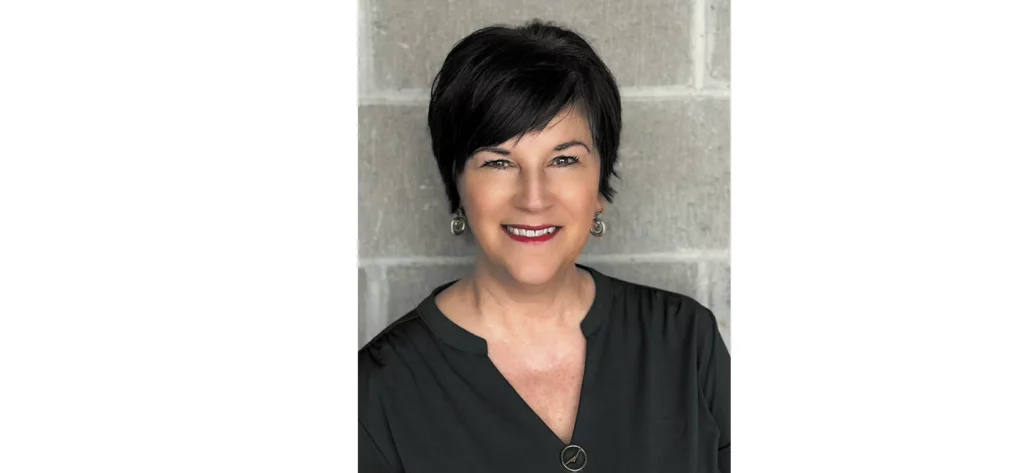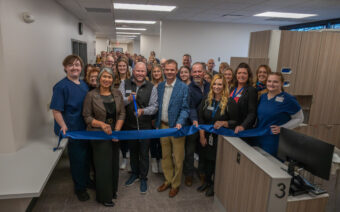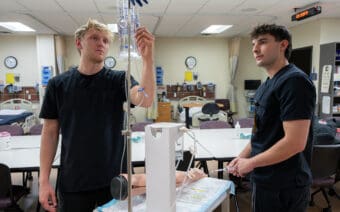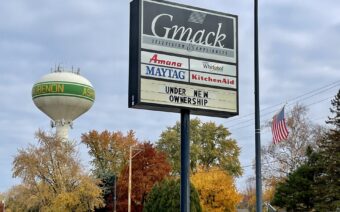
May 5, 2023
NORTHEAST WISCONSIN – As one of the 11 regional boards established in the State of Wisconsin by the Workforce Investment Act of 1998 (WIA), the Bay Area Workforce Development Board (Bay Area WDB) focuses on addressing local economic workforce issues in the counties of Brown, Door, Florence, Kewaunee, Manitowoc, Marinette, Menominee, Oconto, Outagamie, Shawano and Sheboygan.
The guidance of that work is now in the hands of Vickie Patterson, the organization’s new executive director – taking the reins from Matthew Valiquette, who left the nonprofit for a job in his home state of Michigan earlier this year.
“I am looking forward to identifying and clarifying opportunities that exist, defining our role within those and then building the foundation to have an impact,” Patterson said.
A native of Green Bay, Patterson earned a bachelor’s degree in public administration and a master’s degree in administration – both from the University of Wisconsin-Green Bay.
Role responsibilities
As the executive director, Patterson – who started with the nonprofit in 2015 leading its work experience program and was promoted to director of program operations in 2021 – said she provides strategic direction for future programming and services – for both employers and individuals seeking employment and/or training.
One of the things Patterson said she would like to accomplish as executive director is to enhance the convener and strategist roles of the Bay Area WDB.
“We have been able – with the help of our sub-recipient organizations – to become successful in providing employment and training services to individuals in our WDA,” she said.
Patterson said in recent years, the Bay Area WDB has focused less on convening employers and community partners to work on specific workforce development issues in the Bay Area region.
“With continued decreased funding for core programming, these roles become more important and bring value to the communities we serve,” she said.
In the role, Patterson said she is also tasked with serving as a member of the state’s Workforce Development Association and as a liaison with the Department of Workforce Development – Division of Education and Training.
“(I am responsible) for strengthening partnerships within the workforce development system, as well as with communities within Bay Area WDB,” she said.
Regional impact
Patterson said expanding the board’s mix of services is also an important aspect she plans to put more of a focus on – including those for incumbent workers, upskilling and services to employers.
“Currently, we focus on unemployed/underemployed individuals – which is something we will always do, however, with low unemployment, technology and AI impacting more and more jobs at a quicker pace, and the need to increase skills-based hiring – we need to increase our work with individuals who require more rapid upskilling,” she said.
Patterson said according to research available in “A State Guide for Preparing the Future Workforce Now (July 2020)” report, 85% of the jobs that will likely exist in 2030 have not even been created yet.
“So, the challenge becomes how do we best train individuals today to be prepared for those jobs of tomorrow – jobs we may not be aware of yet?” she said.
Patterson said the 11 regional WDB boards are important because they provide workforce development solutions at a local level – addressing the unique needs of each community/county within our region.
“By partnering with employers, training providers and other service providers, programming can be tailored to maximize the impact to those communities,” she said.
Patterson said she is currently focusing on building relationships with the Bay Area WDB’s board of directors and the local elected officials.
“These two groups include employers, education, workforce and system partners, along with county executives, or appointed representatives, from our 11-county region,” she said.
Patterson said it’s important for the Bay Area WDB to look forward and begin restructuring its programming, organization structure and funding sources to increase its flexibility to meet the workforce development challenges that are on the horizon.
“(We need to) identify and secure funding and enhance/establish partnerships to bring valued workforce development solutions to employers and those seeking employment in our region,” she said. “I look forward to working more closely with our board of directors and dedicated staff to move the organization in a meaningful direction.”
 Make-A-Wish: ‘Dreams really do come true’
Make-A-Wish: ‘Dreams really do come true’ Pondview Lavender Farm: A budding business
Pondview Lavender Farm: A budding business








